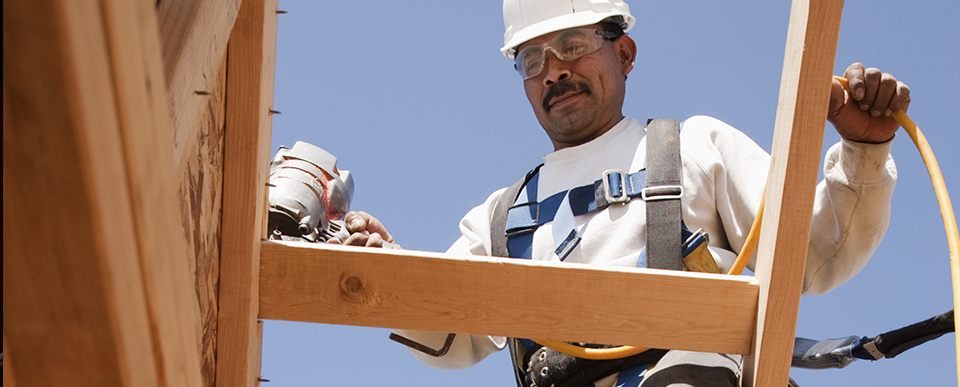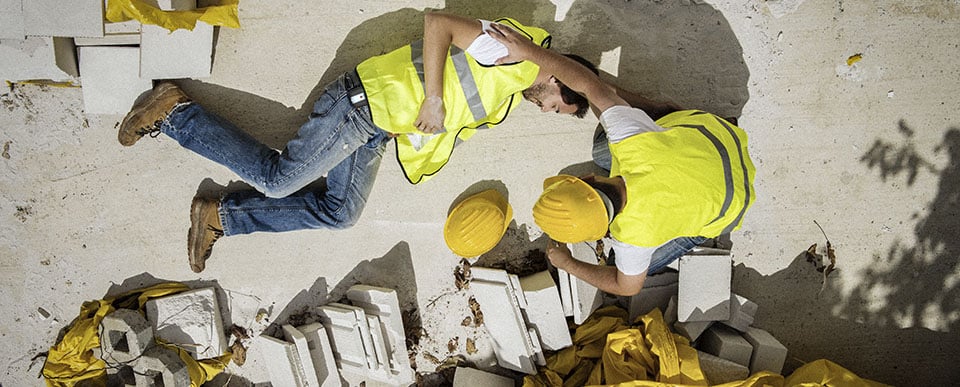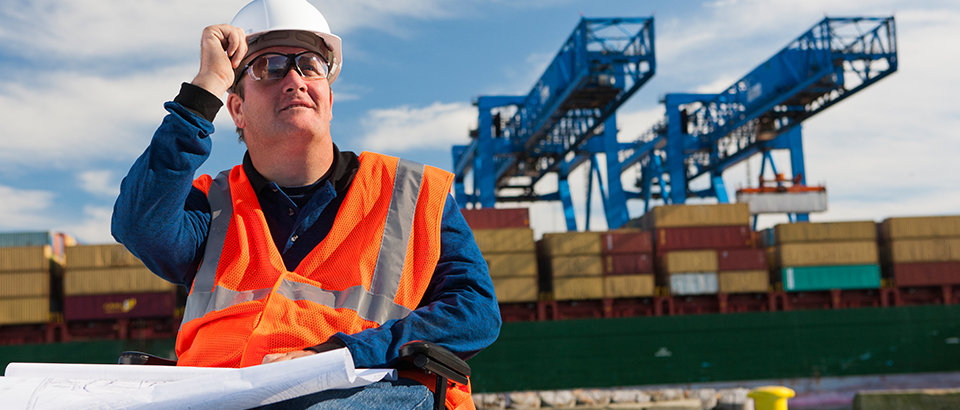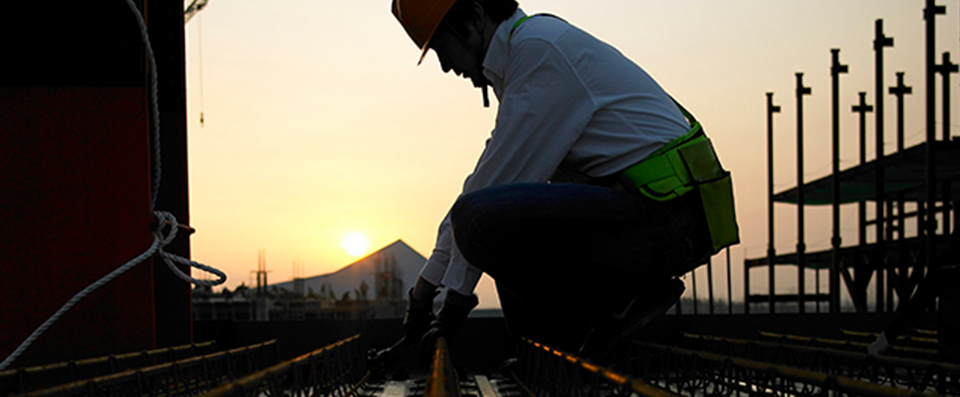Blackline Safety is a technology leader driving innovation in the industrial workforce through IoT (Internet of Things). With connected safety devices and predictive analytics, Blackline enables companies to drive towards zero safety incidents and improved operational performance. Blackline provides wearable devices, personal and area gas monitoring, cloud-connected software and data analytics to meet demanding safety challenges and enhance overall productivity for organizations with coverage in more than 100 countries. Armed with cellular and satellite connectivity, Blackline provides a lifeline to tens of thousands of people, having reported over 200 billion data-points and initiated over seven million emergency alerts. For more information, visit BlacklineSafety.com and connect with us on Facebook, Twitter, LinkedIn and Instagram.
Contractor Safety: Are You Responsible When They are On Site?
Blackline Safety, Leader in Connected Gas Detection & Lone Worker Safety
October 15, 2015
Dealing with contractors on site who don’t know of, or adhere to, your safety procedures can be risky. Subject to fines or even jail time when not compliant with legislation, you’re not interested in potentially spending unnecessary capital for other measures to keep workers safe on site. With safety legislation and compliance processes in place for your employees, do you know who is accountable for your contractors?
Around the world, regions have different rules and regulations when it comes to safety and training for contracted companies and such lone workers.
Globally, the International Labour Organization (ILO) reports that “although there are no ILO instruments that specifically address contractors’ and subcontractors’ safety and health at work (or for training in the industry), those concerning occupational safety and health (OSH) in general emphasize the importance of OSH training for all workers. Safety training should focus on supporting preventive action and finding practical solutions.”
While there are no specific global requirements, here we explore contractor safety regulations for the construction industry in the United States, United Kingdom, Canada and Australia.
United States
The Occupational Safety and Health Administration (OSHA) offers Safety and Health Regulations for Construction. According to the rules of construction “in no case shall the prime contractor be relieved of overall responsibility for compliance with the requirements of this part for all work to be performed under the contract.”
Workers in the engineering and construction industry face many hazards, as construction sites are one of the most dangerous places to work in the world—especially for contracted lone workers.
 Additionally, OSHA indicates that “to the extent that a subcontractor of any tier agrees to perform any part of the contract, he also assumes responsibility for complying with the standards in this part with respect to that part…With respect to subcontracted work, the prime contractor and any subcontractor or subcontractors shall be deemed to have joint responsibility.”
Additionally, OSHA indicates that “to the extent that a subcontractor of any tier agrees to perform any part of the contract, he also assumes responsibility for complying with the standards in this part with respect to that part…With respect to subcontracted work, the prime contractor and any subcontractor or subcontractors shall be deemed to have joint responsibility.”
In 2013, the Occupational Safety and Health Administration (OSHA) in the United States reported 20 percent of occupational fatalities were in construction. This September, CBS news reported the fatality of a maintenance contract worker. At this point, it is unclear whether the employer or contracted company is liable.
United Kingdom
The UK’s Health & Safety Executive (HSE) reported 31 percent of workplace fatalities were construction-related in 2013.
 HSE provides multiple resources for contractors in the construction industry and states, “If you are contracting construction work you have duties as a client under the Construction Design and Management Regulations 2007 (CDM).”
HSE provides multiple resources for contractors in the construction industry and states, “If you are contracting construction work you have duties as a client under the Construction Design and Management Regulations 2007 (CDM).”
The Construction (Design and Management) Regulations (CDM) has published Legal Series guidance that supports CDM 2015 and explains it in more detail. HSE is currently determining whether to replace this guidance with an Approved Code of Practice, which many in the industry indicated they would prefer when surveyed in 2014.
Using Contractors: A Brief Guide states, “Both you and the contractor you use have responsibilities under health and safety law. Everyone needs to take the right precautions to reduce the risks of workplace dangers to employees and the public. Make sure everyone understands the part they need to play in ensuring health and safety.”
Canada
The Canadian Centre for Occupational Health and Safety (CCOHS) reports some instances where employers were found to not protect the safety of their contractors—with fatal results.
 For example, “On June 12, 2006 a landscape contractor was crushed to death when the backhoe his employer was driving failed to stop, pinning the employee to a wall. The investigation of the incident found that the 30-year-old backhoe had not received any regular maintenance since the vehicle was purchased and that no formal inspection had been done in the previous five years. Upon further investigation it was discovered that the vehicle had no braking capacity. In September 2010, the employer was convicted of criminal negligence causing death and was given a two-year conditional sentence to be served in the community.”
For example, “On June 12, 2006 a landscape contractor was crushed to death when the backhoe his employer was driving failed to stop, pinning the employee to a wall. The investigation of the incident found that the 30-year-old backhoe had not received any regular maintenance since the vehicle was purchased and that no formal inspection had been done in the previous five years. Upon further investigation it was discovered that the vehicle had no braking capacity. In September 2010, the employer was convicted of criminal negligence causing death and was given a two-year conditional sentence to be served in the community.”
In the province of British Columbia, WorkSafe BC’s
prime contractor responsibilities state that at most multiple-employer worksites, “the prime contractor is responsible for health and safety” and offers advice for contractors to protect themselves and take preventative safety measures:
- Get it in writing
- Identify, address and correct hazards
- Communicate and coordinate with subcontractors
- Assign a qualified coordinator
- Establish an emergency response plan
- Maintain accurate records
Essentially, it’s best for both employer and contractor to take the above tips into consideration when working together.
Australia
The Australian Government has implemented multiple safety measures for determining whether a contractor even qualifies as an ‘Independent Contractor’ in the country. The Essential Handbook states, “If you hire independent contractors, you are legally responsible for ensuring their health and safety at all times while in your workplace (to the extent that this is reasonably practicable). For example, you should ensure that your workplace, any machinery, substances and facilities used are safe, and that all workers have adequate training, supervision and are properly licensed if required.”
 According to the 2012 Health & Safety Handbook, employers “have a duty of care for the health and safety of a contractor’s workers when they are performing work on your worksite. This is your general duty of care under health and safety legislation and is non-delegable, meaning that it is a duty that you cannot contract out or transfer over to another party, e.g. a contractor. In principle, you therefore owe the same duties to contractors and their workers as you do to your own workers.”
According to the 2012 Health & Safety Handbook, employers “have a duty of care for the health and safety of a contractor’s workers when they are performing work on your worksite. This is your general duty of care under health and safety legislation and is non-delegable, meaning that it is a duty that you cannot contract out or transfer over to another party, e.g. a contractor. In principle, you therefore owe the same duties to contractors and their workers as you do to your own workers.”
Summary
In the United Kingdom and Australia, the governments have implemented legislation that requires the employers to be responsible for the safety and well-being of their contractors.
Canada and the United States still have some work to do so that contractor responsibility is clear for both employers and contractors.
To start, determine whether you can guarantee your safety compliance internally. Stay tuned for our “Safety Compliance: Can You Guarantee Yours?” quiz, to see how you measure up.
Get In Touch
Let’s start a discussion about your safety challenges and needs.
Related Blog Posts
Real-life Incident: Anna’s Story – Heart Attack While Working Alone
January 22, 2025
‘Please hurry!’How Anna’s G7 Saved Her Life Pain ripped through Anna’s chest and back, taking her breath away. She felt dizzy and like she was...
Real-Life Incident: Leo’s Story - Stranded in the Wilderness
December 13, 2024
'I am stranded': Well site inspector credits Blackline connected wearable device for facilitating remote backcountry rescue Leo felt the quad’s...
Real-life Incident: James’ Story – Knocked Unconscious by a Fall
October 09, 2024
'The G7’s alarm woke me up': Tank inspector credits G7 for waking him and agent for staying with him after suffering severe concussion while working...


